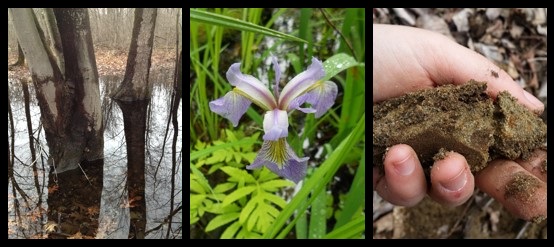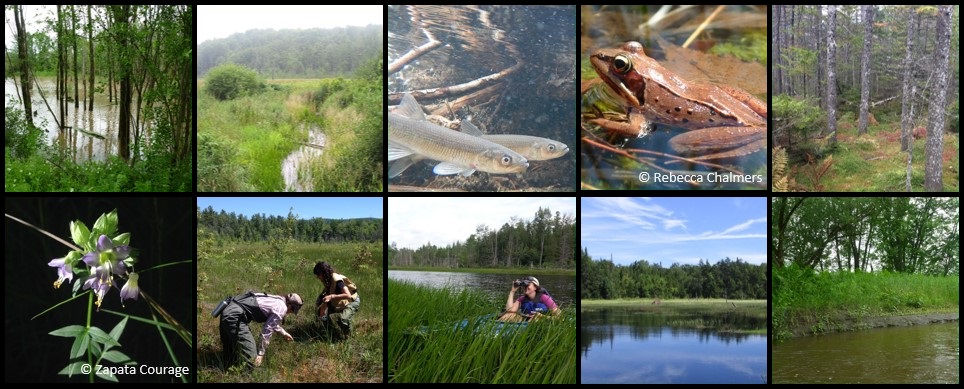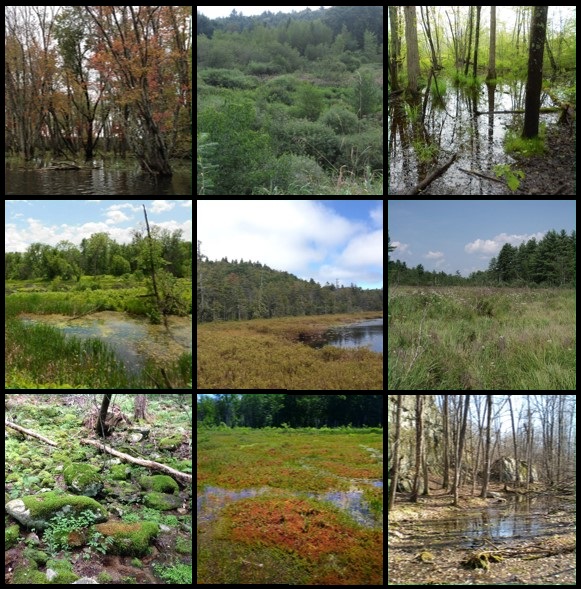Wetland Identification and Delineation
Wetland Functions and Values
Wetland Types in Vermont
Wetlands are places where land and water meet which may be inundated or saturated by water for a few weeks of the year to shallow water year round. Vermont's wetlands are defined as those areas of the state that are inundated by surface or ground water with a frequency sufficient to support plants and animals that depend on saturated or seasonally saturated soil conditions for growth and reproduction. These areas are commonly known as ponds, bogs, fens, marshes, wet meadows, shrub swamps, and wooded swamps. Wetlands often occur in association with lakes, ponds, rivers, and streams, creating transitional areas between dry land and open water. However, wetlands can also be isolated from any obvious connection to water when they occur where the topography collects surface water, or where ground water surfaces.
The State of Vermont protects wetlands which provide significant functions and values and also protects a buffer zone directly adjacent to significant wetlands. Many activities within wetlands or buffers require a State Wetlands Permit. Wetlands in Vermont are classified as Class I, II, or III based on the functions and values which they provide. For more information please visit our Jurisdictional Wetlands and Permitting Page.
Wetland Identification and Delineation

The saturated or seasonally saturated conditions in wetlands create an environment that favors the growth of specifically adapted wetland plants (hydrophytic vegetation) and promotes the development of wetland soils (hydric soils). These three factors (hydrology, vegetation, and soils) are used in wetland identification and in the delineation of wetland boundaries. Click here or on images above to learn more about wetland identification and delineation.
Wetland Functions and Values

Wetlands serve a variety of functions and values beneficial to the health, safety, and welfare of the general public. Some of the functions and values that wetlands provide include water storage, water quality protection, erosion control, fish and wildlife habitat, habitat for sensitive plants and animals, exemplary natural communities, education and research, recreation and economic benefits, and open space. While the degree to which a wetland serves these functions and values varies from wetland to wetland, each wetland works in combination with other wetlands as part of a complex integrated system. Click here or on images above to learn more about wetland functions and values.
Wetland Types in Vermont

Vermont contains a great diversity of wetlands, ranging from open water habitats to rich forested swamps. Wetlands vary because of differences in hydrology, parent soil material, historical land use, topography and other factors. These differences make each wetland unique in its appearance, biota, and function in the landscape. Some general wetland types present in Vermont include open water wetlands, emergent wetlands, scrub-shrub wetlands, forested wetlands, wet meadows, fens, bogs, and vernal pools. A great place to learn more about the different types of wetlands in Vermont is in Wetland, Woodland, Wildland: A Guide to the Natural Communities of Vermont. E.H. Thompson and E.R. Sorenson. 2000 and 2005. Published by The Nature Conservancy and Vermont Department of Fish and Wildlife, distributed by University Press of New England. Click here or on the images above to learn more about wetland types in Vermont.
